How to properly and the better to insulate the roof of a private house
Insulation of the roof of the house plays a huge role in the completion of construction work. Having built a house or cottage, you have to think about how to make the building as comfortable, warm and cozy as possible. Regardless of whether there will be accommodation in the attic or not, it is necessary to insulate the roof in any case. This will reduce heat loss and contribute to energy saving.
It is not necessary to carry out work on roof insulation with the help of a specialist, everything can be done with your own hands. The whole process should begin with the selection of the necessary materials and the creation of a plan and scheme of work. Any roof consists of external (roof) and internal (overlapping and truss frame) parts. All insulation work is carried out only after checking these components, and if necessary, they are repaired. Then remove excess moisture and get rid of dampness and mold.
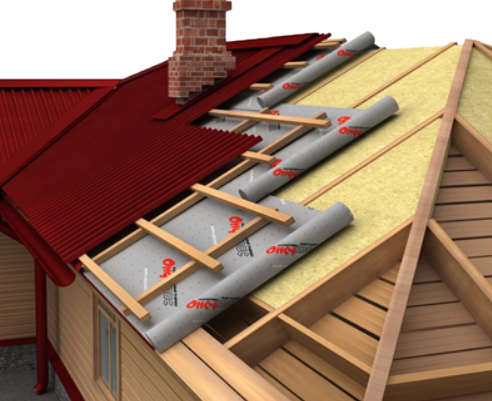
To prevent bacterial damage to wooden structures, the inner surface of the roof is treated with an antiseptic, and to protect metal structures from rust, such surfaces are treated with anti-corrosion compounds.
Roof insulation materials
Modern manufacturers offer a wide range of materials for. The most popular of which are the following:
- Mineral wool (fiberglass, stone slabs);
- extruded polystyrene foam;
- Polyurethane foam.
The material to dwell on is determined by the features of the roof. For example, pitched roofs are best insulated with fiberglass.
Fiberglass
This material has excellent heat-insulating and sound-insulating properties. Also, fiberglass is durable, the service life reaches fifty years, it is fire resistant and vapor permeable. And, of course, the price, the purchase of such material is a very inexpensive pleasure. The most popular materials in use are mineral wool and expanded polystyrene. This popularity is due to the ease of manipulation with them.
Mineral wool
Depending on the initial type of material (stone or glass), mineral wool is divided into two types:
– the fibrous structure of the material, formed during the melting of small particles of rock, as well as various slags and mixtures obtained in industrial metallurgy, make the product truly unique. The material is not afraid of high temperatures, and is also sufficiently resistant to aggressive chemicals. 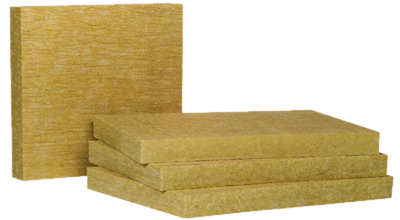
glass wool- heat-insulating material having air fibers, which have special strength. The product is obtained by melting ordinary glass. Like stone wool, the insulation has a high resistance to chemical products and does not burn. The thermal conductivity of glass wool is 0.05 W/m°C at 25°C. During operation, glass wool practically does not shrink, and its fibrous structure, even after a long period of time, remains the same elastic and elastic. 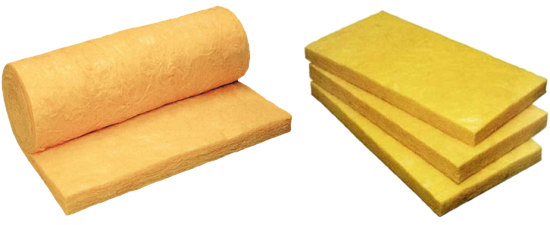
Mineral wool has excellent characteristics in the following areas:
- Low thermal conductivity;
- Excellent sound insulation;
- Fire resistance, which is very important for the roof material;
- High environmental friendliness and durability.
Styrofoam and foam
Both heaters have a fairly low specific gravity, so their use does not make the roof heavier, and also does not provide for the additional use of a vapor-insulating material, since neither polystyrene nor absorb moisture.
polyurethane foam
One of the modern materials is. It does not need to be glued or nailed to the surface, it is applied by spraying onto it. This material has excellent adhesion to surfaces and the result is a durable seamless construction that does not allow cold or moisture to pass through.
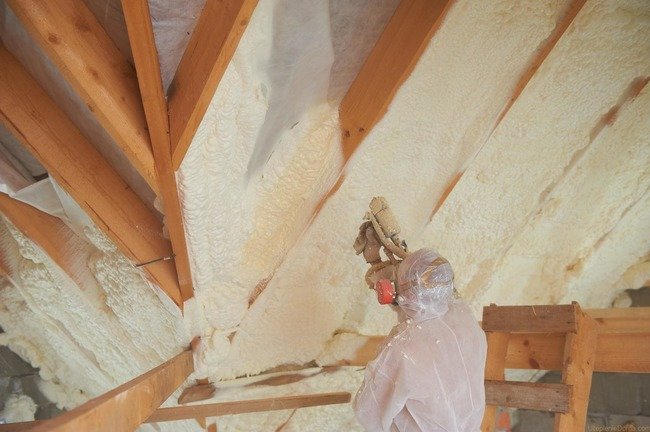
Ceiling insulation in a house with a cold roof
When the materials are selected, you can go directly to the process of laying the material. The peculiarity of such a process depends on the design of the roof and the future use of the attic. If the use of the attic as a living space is not provided, then the insulation material is laid on the floor of the attic between the logs, and not between the roof rafters. A membrane is laid on top to improve vapor permeability, then it can be covered with any floor covering. 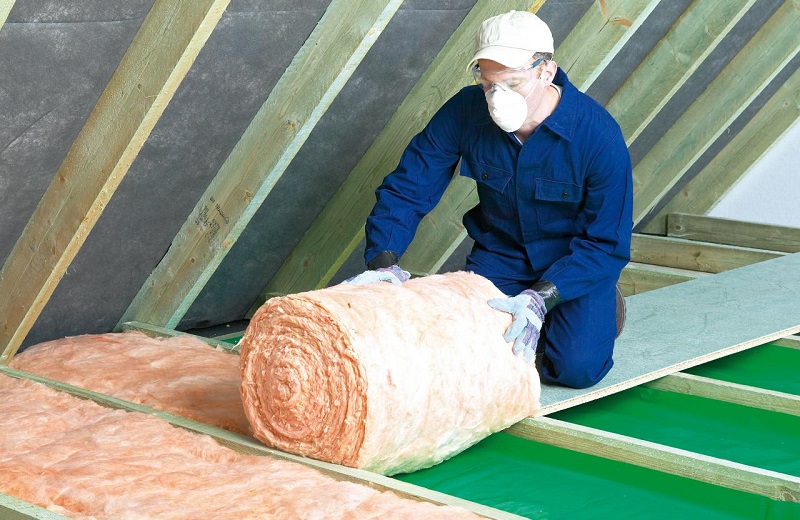
To exclude the formation of the appearance of "cold bridges", the insulation must adhere to the lags as tightly as possible. To do this, when cutting insulation, its size must be done on 1-2 cm. wider than the distance between the lags.
Attic insulation from the inside
If a decision is made to equip the attic for living quarters, the insulation of the roof of the house provides for a different technology:
- Initially, a waterproofing layer is laid to protect the insulating material from getting wet. To do this, a waterproofing membrane is laid on top of the crate and fixed with bars of the counter-crate;
- Then the insulation itself is laid between the rafters. In order to avoid the formation of gaps, during installation, the same technology should be followed as when insulating the ceiling - the insulation should be wider by 1-2 cm.
- As a vapor-permeable layer, a vapor barrier film is attached over the insulation, at the joints, it is overlapped;
- The film is fixed on top with bars, which will serve as the basis for finishing.

Insulation of the roof of the house - attic floor
flat roof insulation
Warming a flat roof goes a little differently. The beginning of work is the definition of the purpose of the premises. The proposed use of the attic for a gym or some other place for entertainment suggests that the roof must be really strong in order to withstand serious loads.
- To form a small roof slope, a cement screed is made on a reinforced concrete slab;
- Then, as in the case of a pitched roof, a waterproofing layer is laid;
- Upon completion of these works, everything is covered from above with a layer of heat-insulating material (polystyrene, stone wool, extruded polystyrene foam, etc.), on top of which a layer of fiberglass or geotextile is laid.
- And the final stage is the backfilling of pebbles or a layer of gravel and the subsequent laying of floor or paving slabs.

If there is no living space under the roof, then the vapor barrier and insulation are laid in the attic, and the waterproofing layer under the roofing material. And in the case of complete non-use of the attic space of a flat roof, insulation is carried out either from the inside or from the outside.
Insulation of the roof of the house is not only additional square meters, but also reliable protection of the main room from severe frosts in winter and sultry heat in summer.
In contact with
 Masonry mortars for brick kilns
Masonry mortars for brick kilns Why do the windows fog up in the apartment
Why do the windows fog up in the apartment Construction and schemes of brick ovens
Construction and schemes of brick ovens How to lay paving slabs: tips and tricks
How to lay paving slabs: tips and tricks How to drill bathroom tiles
How to drill bathroom tiles Monolithic slab on coarse soil
Monolithic slab on coarse soil Which electric heater is economical
Which electric heater is economical